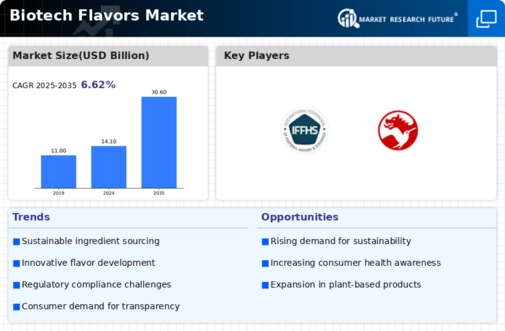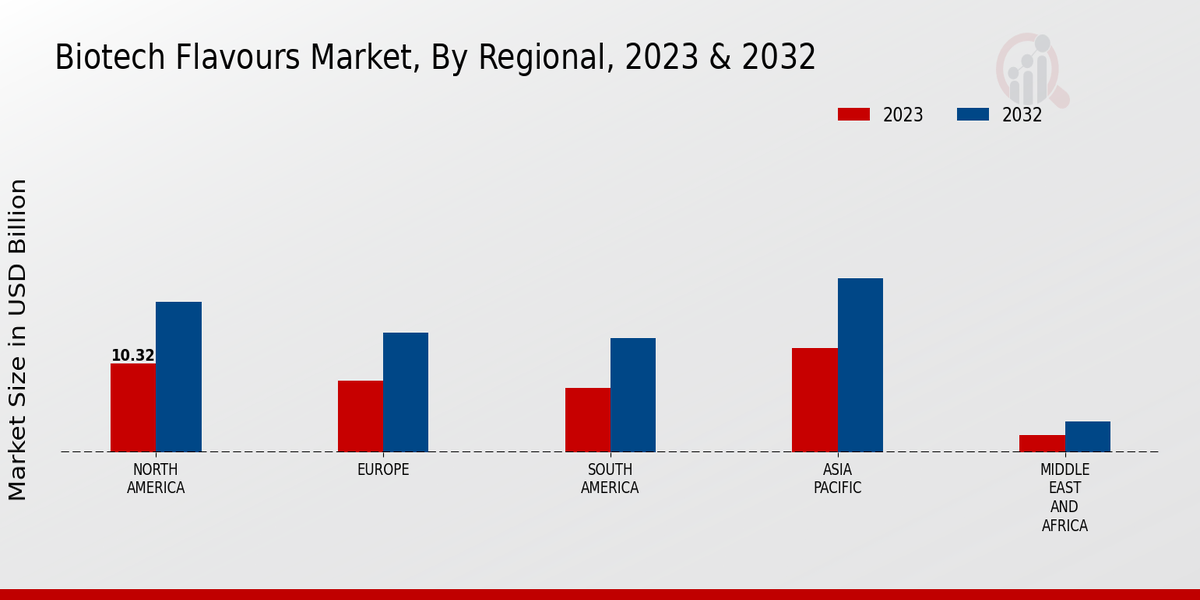Market Growth Projections
The Global Biotech Flavors Market Industry is projected to experience substantial growth, with estimates indicating a rise from 14.1 USD Billion in 2024 to 30.6 USD Billion by 2035. This growth trajectory suggests a robust market environment, driven by various factors including technological advancements, changing consumer preferences, and regulatory support. The anticipated compound annual growth rate of 7.27% from 2025 to 2035 further underscores the potential for expansion within the industry. As companies adapt to these dynamics, the market is likely to witness increased competition and innovation, shaping the future landscape of biotech flavors.
Growing Health and Wellness Trends
The Global Biotech Flavors Market Industry is significantly influenced by the growing health and wellness trends among consumers. There is an increasing awareness of the impact of diet on health, leading to a surge in demand for flavors that complement healthier food options. This trend is evident as the market is projected to expand to 30.6 USD Billion by 2035. Consumers are actively seeking flavors that enhance the taste of low-calorie, low-sugar, and functional foods, prompting manufacturers to innovate and reformulate their products. This shift towards health-oriented flavors is likely to drive the industry forward, as companies respond to changing consumer preferences.
Rising Demand for Natural Ingredients
The Global Biotech Flavors Market Industry experiences a notable increase in demand for natural ingredients, driven by consumer preferences for clean label products. As consumers become more health-conscious, they seek flavors derived from natural sources rather than synthetic alternatives. This trend is reflected in the projected market growth, with the industry expected to reach 14.1 USD Billion in 2024. Companies are increasingly investing in biotechnological advancements to extract flavors from plants and other natural sources, ensuring that their products align with consumer expectations for transparency and sustainability. This shift towards natural ingredients is likely to propel the industry forward.
Regulatory Support for Biotech Innovations
Regulatory frameworks are becoming increasingly supportive of biotechnological innovations in the Global Biotech Flavors Market Industry. Governments worldwide are recognizing the potential of biotechnology to enhance food safety and quality. This support is reflected in the establishment of guidelines that facilitate the approval of biotech-derived flavors. As regulations evolve, they create a more favorable environment for companies to invest in research and development. This regulatory backing is expected to stimulate growth within the industry, as it encourages the adoption of innovative flavor solutions that meet consumer demands while ensuring safety and compliance.
Expansion of Food and Beverage Applications
The Global Biotech Flavors Market Industry benefits from the expansion of applications across various food and beverage sectors. As the food industry diversifies, there is a growing need for innovative flavors that cater to different culinary trends. This diversification is driving demand for biotech flavors in sectors such as dairy, snacks, and beverages. The ability to create unique flavor experiences is becoming a key differentiator for brands. Consequently, this expansion is likely to contribute to the overall growth of the industry, as companies seek to capitalize on emerging trends and consumer preferences.
Technological Advancements in Flavor Production
Technological innovations play a crucial role in shaping the Global Biotech Flavors Market Industry. Advances in biotechnology, such as fermentation and enzymatic processes, enable the production of flavors that are not only more sustainable but also more cost-effective. These technologies allow for the creation of complex flavor profiles that cater to diverse consumer preferences. As a result, the industry is poised for growth, with a projected compound annual growth rate of 7.27% from 2025 to 2035. Companies that leverage these advancements are likely to gain a competitive edge, enhancing their product offerings and meeting the evolving demands of the market.













